Introduction
The Kriegsmarine, or German Navy from 1933 onwards was like the US and Royal Navy interested to provide distant support to its assets, whether they were U-Bootes, S-Bootes (motor torpedo boats) or R-Bootes (minesweepers) and built 12 fleet tenders, 3 gunnery training ships doubling as wartime minelayers, two generic fleet tenders (one doubling as admiralty yacht) and one icebreaker doubling as AA training ship. But probably the most interesting was the very advanced radar ship Togo, used as fighter direction vessel. This portal posts details all these auxiliary ships, with perhaps dedicated posts in the far future.
Schulschiff (Linienschiff) Schleswig Holstein
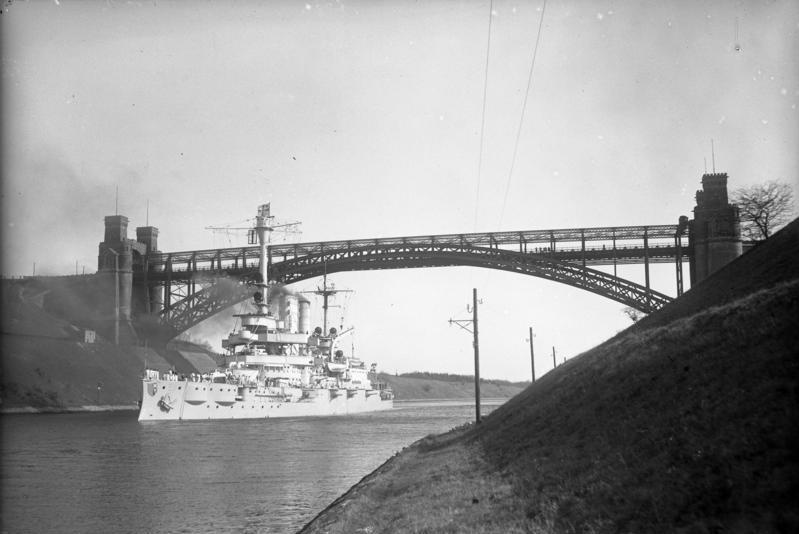
By default of having almost no recent ship left after the Hochseeflotte’s internment at Scapa Flow, allied war reparations and 1919 reductions of the treaty of Versailles, the Kriegsmarine was “free” to keep six pre-dreadnought battleships and six equally old cruisers for training and coast guard purposes. The Reichsmarine thus was authorized to keep eight battleships of the pre-dreadnought type under Article 181, two being maintained in reserve, but activated for coastal defense if needed. The list comprised the Barcuschweig class Braunschweig, Elsass, Hessen, Preussen, and Lothringen. They were used as training ships all. The remainder were three Deutschland class ships (Schleswig-Holstein, Hannover, Schlesien). But as the new Deutschland class were launched, as specific replacement for the three early Braunschweig, Preussen was placed in reserve in 1929 and the remainder, apart Hessen, discarded in 1931.
Schleswig-Holstein was among the old pre-dreadnoughts retained along with sisters Hannover and Schlesien to receive some upgrades, notably to better perform their tasks as training ships. Schleswig-Holstein was recommissioned as new fleet flagship on 31 January 1926 after an extensive refit, with new fire controls, and enlarged aft superstructure for the admiral’s staff plus new 15-centimeter (5.9 in) guns, four 50 cm torpedo tubes in main deck casemates fore and aft instead of the submerged tubes.
In 1939 she famously take on the Polish Westerplatte fortress but saw little action afterwards, although modernized again.
In 1940 her only campaign in WW2 was the invasion of Denmark. She led Gruppe 7, the German invasion force escorted by the torpedo boat Claus von Bevern and several auxiliary ships to support the capture of Korsør and Nyborg. She briefly was grounded in the Great Belt, west of Agersø. After this she returned to her to training duties, as flagship, Training Units. By late 1943, it was envisioned to reactivate her since she ran on coal and by 1 February 1944, fully recommissioned, she was a cadet training ship, then sent in Gotenhafen for a refit as convoy escort ship with a powerful FLAK, but the British bomber raid of 18 December 1944 hit her hard, she foundered in shallow water. Her crew was reaffected to the defense of Marienburg. She was raised by the Soviet Navy, transferred to Tallinn and beached as target off the island of Osmussaar (Gulf of Finland) until 1966, her remains now submerged.
Characteristics
Displacement: 12,900t, 15,000t FL
Dimensions: 125 x 16 x 4.80m
Propulsion: 2 shaft VTE, 8 standard boilers, 15,000 hp. 15 knots
Armor: belt 250 mm, bridge 80 mm, blockhouse 320 mm
Crew: 440 + 320 cadets
Armament: 4 x 280 mm (2×2), 4 x 88, 2 x 37 mm, 4 x 20 mm FLAK
Zielschiff Hessen
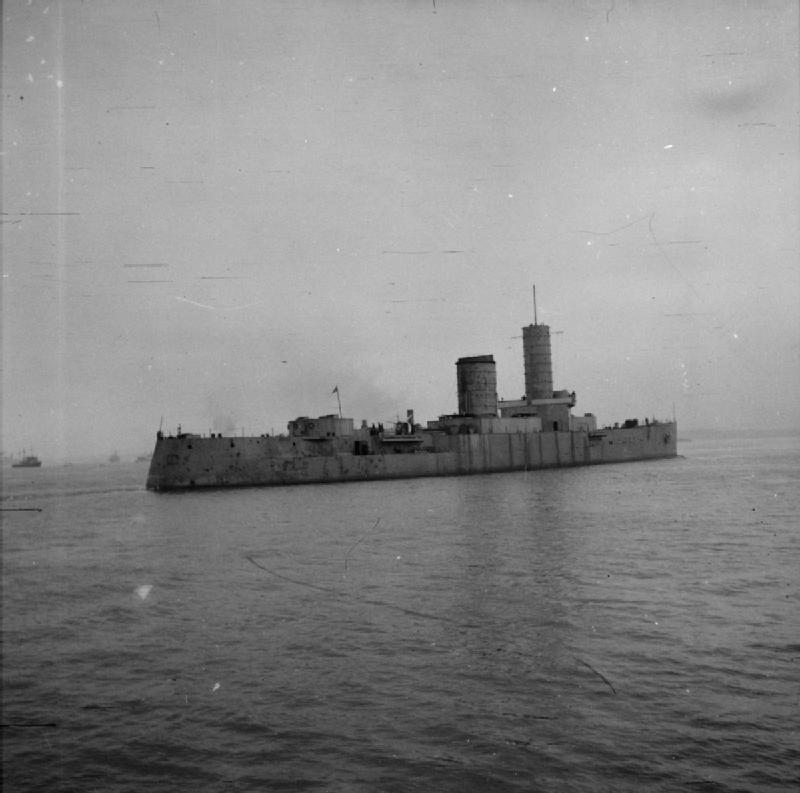
Hessen, the last surviving of the Brauschweig class by November 12, 1934, was decommissioned, replaced officially by the new Admiral Scheer. Since target ships were not concerned by treaties, instead of scrapping her she was converted into a radio-controlled target ship. Masts, armament and her two funnels were removed. She had four new oil-burning boilers (18,000 shp) installed for 20 kts. A new bow section was added so she was 10 m longer, and the turbines were modernized. All apparatus for her to be remotely controlled were also installed. She re-entered service under the same name from April 1, 1937, piloted by the lead boat KMS Blitz, former torpedo boat T 185 (ex V 185), until then operating the target ship Zähringen from 1933.
Hessen was remote controlled but still had a crew of 80 to operate here and conduct her on site, then evacuating when she remotely controlled for the gunnery exercise. As T 185 was worn out, a new torpedo boat, also WW1 vintage, was connverted, T 151 (ex V 151) on March 12, 1937 as pilot vessel under the name KMS Komet (later the name was dropped as a new auxiliary cruiser (raider) retook this name. On August 30th, 1937 both performed the first live exercise, for the benefit of the new light cruiser Leipzig (K class). Komet became a torpedo fishing boat in April 1939, replaced by T 123 (ex T 23, ex S 23), also “Komet”.
In late 1945 as the Soviet Army occupied east Germany, both Hessen and Blitz were confiscated and from January 1946 they sailed to Libau together (with Nürnberg, destroyer Erich Steinbrinck, T 33, T 107). Hessen was renamed “Tsel”. She was apparently used again as target ship untiol discarded by the late 1950s, then scrapped.
 KMS BREMSE (1931)
KMS BREMSE (1931)
Gunnery training ship/minelayer
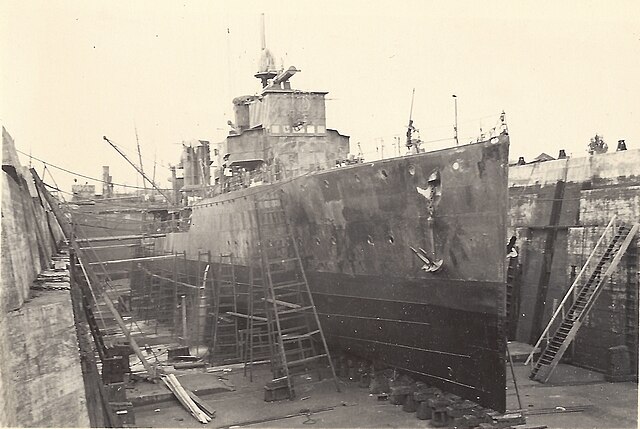
This vessel was purpose-built, launched for the Reischmarine on 24.1.31. Laid down in 1930. In basic layout this vessel resembled a World War I light cruiser. Trials ship for diesel machinery installed in Deutschland. She was attached to the artillery training school at Kiel, replacing older vessels. In 1933 she had a complete refit, mast shortened, her artillery director removed.
In 1939 she appeared in the movie “Der letzte Apell” with two additional dummy funnels to play a British cruiser.
With the Invasion of Poland by September 1939, she escorted the auxiliary minelayers Tannenberg and Hansestadt to Danzig. In October, she escorted troop transports in the Baltic but returned to the Kiel artillery school until March 1940. April 1940 saw her pressed in Operation Weserübung, as part of the group attacking Bergen. Shelled by Norwegian coastal artillery she had two 21 cm hits, and was later repaired in Stavanger. On November, 1 she was accidentally rammed Donau, off Bergen but damage was quick to repair. In June 1941 she was leaving Kiel for escort and on July, 30 attacked by British Albacore and Fulmar from HMS Victorious and escaped.
However on September 6, 1941 while escorting troopships Trautenfels and Barcelona in Hammerfjord, she was spotted and caught by the British cruisers HMS Nigeria and Aurora. She interposed herself so the transports could escape, and hammered by withering fire at close range, until HMS Nigeria was close enough to ram. Cut in half, she sank rapidly, brining to the bottom half the crew, some 160 men. Other sources claims she was sunk by gunfire alone.

Specs
Displacement: 1,435t standard, 18,701 tonnes deep load.
Dimensions: 31 8ft 3in wl, 341 ft 2in oa x 31ft 2in x 6ft 7in (97.00, 104.00 x 9.50 x 2.80m)
Machinery: 2-shatts, 4 double-acting 2-stroke MAN diesels, 26,000 bhp = 27kts
Armament: 4-127mm/45 C34 (4×1), 8-20mm C30, 350 mines
Complement: 192
 KMS Brummer (1934)
KMS Brummer (1934)
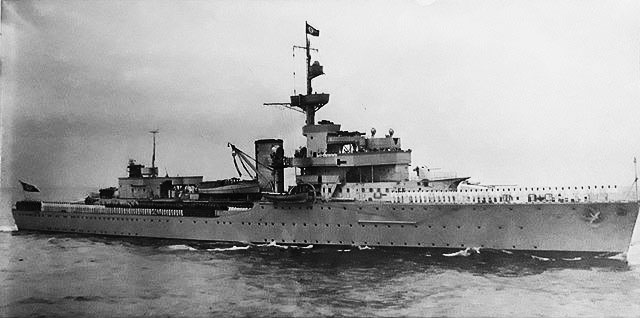
Laid down 1934 by Deschimag, Bremen. Resembled contemporary German tenders in general layout. She was sunk on 14.4.40 during Operation Weserubung, the Norwegian campaign. She was a gunnery training ship/minelayer launched on 21.12 1932. After being commissioned in 1936 Brummer she was attached to the Naval Air Defense and Artillery School (Marineflugabwehr und Küstenartillerieschule) in Swinemünde spring of 1937 and she made two visits to Odde, Göteborg, and Helsingborg. In 1939 she took part in the invasion of Poland, laying mines off the Polish coast and by January 1940 used as a commerce raider in the Baltic Sea, then in April 1940, took part in Operation Weserübung as command ship. On April 14 she was torpedoed by the HMS Sterlet off Jutland but stayed afloat for nine hours so the crew could evacuate.
Specs
Displacement: 1596t standard; 1860t deep load
Dimensions: 308ft 8in wl, 318ft 3in oa x 37ft 9in x 11ft 10 in (94.00, 97.00 x 11.50 x 3.60, 4.00m)
Machinery: 2 shafts, Laval geared tubines, 3x watertube boilers, 2x 4-stroke Sulzer diesels, 6000shp for 21kts
Armament: 4x 127mm/45 C34 (4×1), Twin 37mm/83 C38, 280 mines m/83 C33 420mm
Complement: 168
 KMS Brummer ii (1935)
KMS Brummer ii (1935)
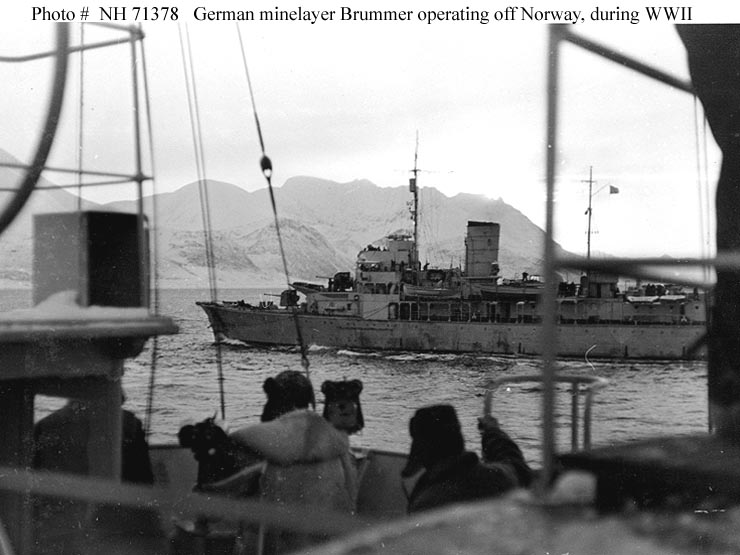
The second KMS BRUMMER was a gunnery training ship usable as minelayer in wartime launched on 29.5.35. She was the Ex-Norwegian Olav Tryggvason, laid down at Horten N Yd in 1931 captured to replace the previous Brummer after she was lost in Norway. Olav Tryggvason was taken, renamed Albatros II on 11 April, and on 16 April Brummer after she had been torpedoed in the Kattegat on 14 April 1940. After capture she was rearmed, her former four 12 cm main guns ended on the Atlantikwall at Hundvåg in Vestlandet by May 1945 and she was used as minelayer off Netherlands and Belgium for the planned invasion of England.
Next she was sent in the Baltic Sea for Operation Barbarossa, laying mines in the Gulf of Finland at Utö with KMS Tannenberg and Hansestadt Danzig on 14 June 1941 in preparation for the invasion.
On 22 June Mine Group Nord operated west of Hanko (Apolda) until attacked by two Soviet Beriev MBR-2 flying boats. The minefield claimed a Soviet destroyer, Gnevny and a submarine, M-81. Precious, Brummer was the only purpose-built minelayer in the Kriegsmarine and multiplied missions, with Operation Nordwind in September 1941, and in 1942-1944 mainly operated in the North Sea and off Norway. On 9 April 1943 the she was torpedeod but missled by Soviet submarine K-21 off Båtsfjord, Finnmark. In 1944 she took part in Operation Hannibal, used for mining until the spring of 1945 and started evacuating German troops and civilians from east prussia. On 3 April 1945 RAF bombers bombed her in drydock inKiel. Her wreck was scrapped in 1945-1948.
Specs
Displacement: 2410t standard; 3010t deep load
Dimensions: 354ft 4in wl, 370ft 9in oa x 44ft 3in x 10ft 6in, 13ft 9in max (108.00, 113.00 x 13.50 x 3.20, 4.20m)
Machinery: 2-shaft Wagner geared turbines, 2 Wagner boilers, 10,000shp = 20kts
Armament: 2×2 105mm/65 C33, 2x 88mm/45 C35, 2×2 37mm/83 C30, 450 mines
Complement: 182 (480 as TS) .
 KMS Saar
KMS Saar
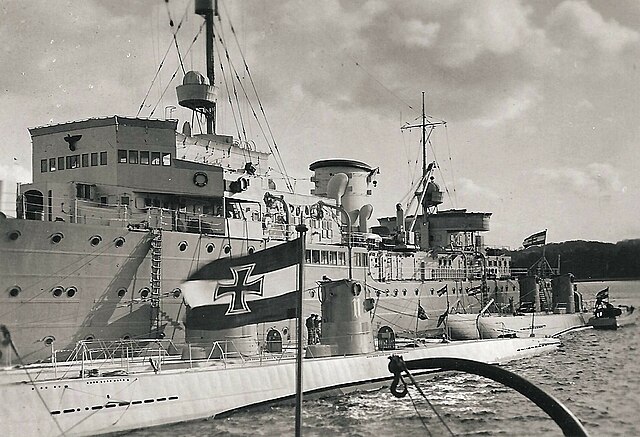
SAAR was an U-boat tender (U-Begleitschiff) launched on 5.4.34, Commissioned 1.10.34
After completion and sue as target ship, she ws assigned to the U-Boot-Abwehrschule in Kiel-Wik, for submarine officers and in 1935 became tender to the Weddigen Flotilla (1st U-boat Flotilla) commanded by Fregattenkapitän Karl Dönitz in Kiel. On 6 October 1937 she was reassigned to the Saltzwedel Flotilla (2nd) at Wilhelmshaven and from July 1940, was in the Baltic tendering the 21st, 25th, 26th and 27th U-boat Flotillas in Pillau and Gotenhafen. In 1945 she became an accommodation ship by FdU East (German ComSubEast). In 1944, her AA armament was increased to four 40mm/70 Bofors and sixteen 20mm C38 in four quad (flakvierling) mounts. Postwar, she was transferred to France as war reparations in 1945, renamed Gustav Zédé, and stricken in 1970.
Specs
Displacement: 2710t standard; 3250t deep load
Dimensions: 311ft 8in wl, 331ft 4in oa x 44ft 3in x 14ft lin, 15ft max (95.00, 101.00 x 13.50 x 4.30, 4.60m)
Machinery: 2 shafts. 2 MAN 4-stroke diesels, 4800bhp = 18.3kts
Armament: 3x 105mm, 8x 20mm C30 FLAK
Complement: 228 + 253 U-Boat crews capacity resting aboard
 Wilhelm Bauer class (1940)
Wilhelm Bauer class (1940)
KMS Wilhelm Bauer, Waldemar Kophamel, Otto Wünsche
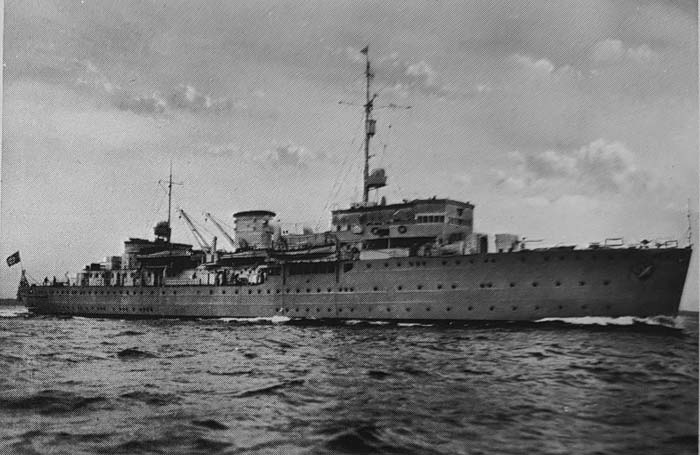
Wilhelm Bauer 1940
KMS WILHELM BAUER was the last and largest Kriesgmarine class of U-boat tenders wit three vessels launched 1938-40: KMS Wilhelm Bauer (30.4.40, bombed at Travemünde 8.4.45 and later BU), Waldemar Kophamel (21.10.40, to USSR as Kuban 1945), Otto Wünsche (8.11.43, to USSR as Pecora 1945). All built by Howaldtswerke, Kiel.
KMS Wilhelm Bauer was named after the 1850s submarine pioneer Wilhelm Bauer, first of eight planned, with only four launched, three completed due to the start of WW2 and other priorities. They became the largest fleet tenders in the Navy. Bauer was laid down in 1937 at Howaldtswerke Kriegsmarinewerft, launched by December 20, 1938 and commissioned on April 30, 1940. She had four 10.5-cm L/45 anti-aircraft guns, and from 1944 one 4-cm anti-aircraft gun Bofors, two 3.7-cm anti-aircraft guns and four (from 1944 twelve) 2-cm anti-aircraft guns. Her large accomodations allowed to house some 423 submarine crews (each U-Boat Type VII had around 60 crew members, so that’s enough for seven of them). These ships had an operating radius of 9,000 nautical miles. Bauer initially served with the Technical Training Group or “Agrufront” and from July 1940 with the 27th U-Flotilla. In March 1945 the 25th U-Flotilla was formed and on April 8, 1945, she was attacked, bombed in a British air raid in Travemünde. The wreck was raised in 1950/51 and scrapped.
KMS Waldemar Kophamel named after Waldemar Kophamel (1880–1934), WWI submarine commander ace she was the second of eight planned, launched on May 15, 1939 at Howaldtswerke Kriegsmarinewerft (construction number 760) commissioned on October 21, 1940. She started to tend the 27th U-Flotilla, and from February 1941 the 24th U-Flotilla, from February 1942 the 27th U-Flotilla again under command of Lt. Cdr. Erich Langer (October 1940 – June 1944) and Lt. Mollandin (June 1944 – December 1944). On December 18, 1944, she was sunk in an aerial British raid in Gotenhafen (Polish Gdynia). The Soviet Navy raised the wreck in 1949/50, overhauled and repaired her from September 1951 to October 1955 at Neptun shipyard in Rostock (East Germany). She was accepted into the Soviet Navy Northern fleet on September 5, 1951 as “Kuban” and served as tender until September 17, 1973, then accomodation ship ship PKZ-12 until February 9, 1978 and then decommissioned and scrapped.
Otto Wunsch was the third of the Wilhelm Bauer class, named after submarine commander ace Otto Wunsch (1884–1919), also launched at Howaldtswerke in Kiel, 1938, launched on May 23, 1940 and commissioned on November 6, 1943. She was slightly larger than her two sister ships at 139.4 m long (132.2 m in the waterline) 16 m wide, draft 5.10 m, displacement 5900 t. She had four 10.5 cm L/45 anti-aircraft guns, a 4 cm anti-aircraft gun Bofors in 1944, two 3.7 cm anti-aircraft guns and four (1944 twelve) 2-cm flak. She was assigned to the 27th U-Flotilla from November 6, 1943, then 26th U-Flotilla shortly before April 1945 but moved in Febriaru from Pillau to Warnemünde. On the morning of June 14, 1945, she was badly damaged by a large ammunition explosion in Flensburg-Kielseng, having many casualties. She was be towed away and anchored in the fjord.
After repairs postwar she served as accomodation ship for the German Minesweeping administration, but attributed by the allies a Soviet war prize. From January 1946, with six other ships to be delivered to the Soviet Navy she sailed to Libau while returning their crews to Germany (Nuremberg, target ship Hessen and master boat Blitz, destroyer Z 15 and TB T 33, T 107). Later she escorted the destroyers Z 20 and Z 14 to Libau and brought their crews back to Germany. In March 1946 herself was handed over and resumed service by March 6th as “Petschora”. From July 20, 1946 to September 17, 1973 she tended submarines of the Northern Fleet, and from April 13, 1977 she became the accomodation ship PKZ-14, stricken soon after.

Specs
Displacement: 4700t (Otto Wiinsche 5000t) standard; 5600t (Otto Wiinsche 5900t) deep load
Dimensions: 413ft 5in (Otto Wiinsche 433ft lin) wl, 436ft 4in (Otto Wiinsche 456ft) oa X 52ft 6in X 14ft Sin, 15ft 9in max 126.00 (132.00), 133.00 (139.00) x 16.00 x 4.40, 4.80m
Machinery: 2 shafts. 4 MAN 2-stroke diesels, 12,000bhp = 20kts (Otto Wiinsche 13,800bhp = 21.5kts)
Armament: 4-105mm (Otto Wiinsche 2-10S5mm) C33 (2/1×2), 2-37mm/83 C33 (1X2), 140mm/70 Bofors 28, 12—20mm C38
Complement: 310 + 440 U-Boat crews
 Other U-Boat Tenders
Other U-Boat Tenders
Other U-boat tenders in service with the Kriegsmarine were the following converted merchant ships:
KMS Pong (ex-Nicea, 46201, launched 19.12.21, commissioned 27.10.36, 4-37mm + 420mm, later ammunition ship Lensbyg, sunk by internal explosion 14.6.45
KMS Weichsel (ex-Syra, 52001, launched May 1923, commissioned 7.4.37 armed with single 88m 4x 37mm, transferred to Great Britain 1945, then Russian Donec in 1947
KMS Sar (ex-Puma, 4560 tons) launched 23.10.30, commissioned 45.7.43, armed with a single 1-88mm mm AA and ten 20mm AA. To USSR as Neman 1946
KMS Ech (ex-Panther, 4560t) launched 23.10.30, commissioned 10.6.39, armed with a siungle 88mm four 37mm, then 20mm. To USA 1946, Italy 1948 and Israel 1949, BU 1963
KMS Erwin Wasser (ex-Gran Canaria, 6080t) launched 29.1.38, commissioned Jan 1939. She had six 20mm AA, bombed at Kiel 24.7.44.
S-Boote Tenders (Schnellbootbegleitschiff)
In the early days to assist and supply S-boat in growing numbers older minesweepers of WWI vintage (M-Boote) were used by default, rebuild to be usable as fleet tenders but they were far from ideal, too slow, cramped and just worn out. New fleet tenders were needed to be tailor built to assist S-boats in their operations, notably roomy enough to offer them comfortable accomodations between missions. They acted as mobile bases with enough provisions and supplies to assist an entire flotilla of six boats. Each S-boat flotilla in 1939 was to have its own S-boat tender, but the Kriegsmarine struggled to have any built, as these were competiting with more urgent constructions such as destroyers. In fact, apart repurposed foreign captured vessels, construction of tenders stopped in Germany after 1939.
 KMS Nordsee (1921)
KMS Nordsee (1921)
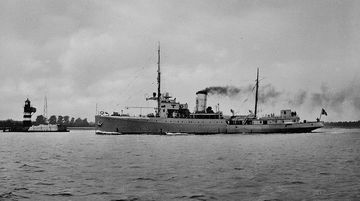 Left: Nordsee, archives Archives Mundt via S-boote.net. She was initially planned as a ferry for the Heligoland Island, launched on 4. July 1914, commissioned on 5. Oct. 1914 and repurposed as the Tender “Nordsee” for the Kaiserliches Marine. She did served in WWI as forward guard ship and then the half-flotilla Befehlshaber Seestreitkräfte Nordsee, decommissioned in June 1919 but reactivated in February 1921 she was reactivated for the Reichsmarine and sailed as tender for the Baltic (Marinestation der Ostsee). In 1932/34 she was the first S-Boat tender for the 1th S-Boote Flotilla and from Oct. 1935 she was assigned to Marineschule Mürwik. On 13. February 1939 she became a permanent TS, retrofitted as Räumboot-Begleitschiff (R-Boote tender) from 15 Nov. 1943, assigned to the 13th R-Boote Flotilla in the German Bight. Postwar she served with the German Minesweeping, war reparation to the US in 1949, BU in Belgium.
Left: Nordsee, archives Archives Mundt via S-boote.net. She was initially planned as a ferry for the Heligoland Island, launched on 4. July 1914, commissioned on 5. Oct. 1914 and repurposed as the Tender “Nordsee” for the Kaiserliches Marine. She did served in WWI as forward guard ship and then the half-flotilla Befehlshaber Seestreitkräfte Nordsee, decommissioned in June 1919 but reactivated in February 1921 she was reactivated for the Reichsmarine and sailed as tender for the Baltic (Marinestation der Ostsee). In 1932/34 she was the first S-Boat tender for the 1th S-Boote Flotilla and from Oct. 1935 she was assigned to Marineschule Mürwik. On 13. February 1939 she became a permanent TS, retrofitted as Räumboot-Begleitschiff (R-Boote tender) from 15 Nov. 1943, assigned to the 13th R-Boote Flotilla in the German Bight. Postwar she served with the German Minesweeping, war reparation to the US in 1949, BU in Belgium.
Specs
Displacement: 859 t
Dimensions: 56,60 x 9,36 x 3,44 m
Propulsion: 2 shafts 2x 2-cyl. VTE, 1520 shp 12 knots
Complement: 51
Armament: 6x LMG
 KMS Tsingtau (1934)
KMS Tsingtau (1934)
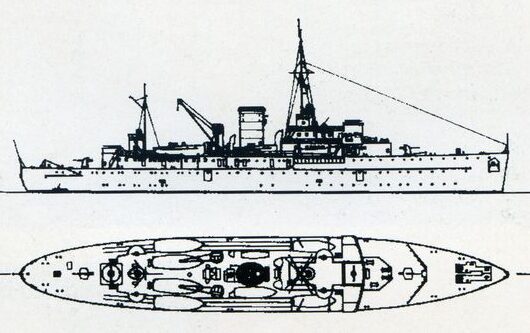
Rendition, src: http://www.s-boot.net/
KMS Tsingtau was the first of these S-boat tender (Schnellbootbegleitschiff), small still, and with many similarities with the contemporary U-boat tender Saar. In 1939 she served as AA training ship and returned to her planned role. She survived the war and took part in the minesweeping administration under British command until scrapped in Britain in 1950.
TSINGTAU was a first dedicated S-boat tender (launched 6.6.34). She was a single ship Built by Blohm & Voss, Hamburg, laid down 1933 and commissioned 24.9.39. Her main armament was later replaced by two twin 88 mm/76 AA guns. She was Ceded to Great Britain in 1945, scrapped in 1950. Tsingtau was the name of the former German colony in China, besieged by the Japanese and British in August 1914. It was the former home port of the famous German pacific fleet led by Admiral Maximilian Von Spee.
Specs
Displacement: 1,980t standard; 2,490t deep load
Dimensions: 288-ft 9-in wl, 310-ft oa x 44-ft 3-in X 13-ft 1-in (88.00, 94.50 x 13.50 x 4.00m)
Machinery: 2x MAN 4-stroke diesels, 4,100bhp, 17.5kts
Armament: 2x 88mm/45 C16, 8x 20mm C30
Complement: 149 + 251 S Boote crews
 KMS Tanga (1937)
KMS Tanga (1937)
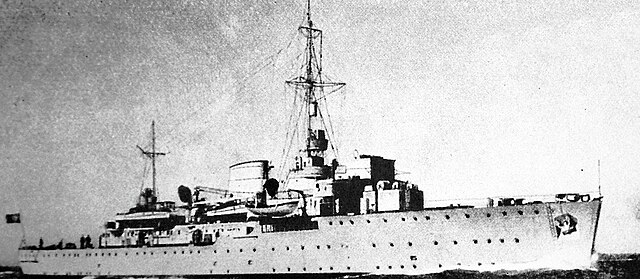
TANGA was a second S-boat tender launched on 4.12.37, Built by Neptun, Rostock, laid down in 1936, commissioned 21.1.39. Her guns were of unknown origin, probably not German. Transferred to the USA in 147, she became the Danish Aegir in 1948 and was scrapped in 1967.
In 1939 she served wth the 2nd Schnellboot-Flotille under Kapitänleutnant Rudolf Petersen, her own captain being Reinhold Bening tendering S-9, S-10, S-14, S-15, S-6 and S-17 in Heligoland. She departed for a reconnaissance mission on 4 September 1939, canceled due to heavy weather with S-17 lost. 10 September she went to Kiel, Swinemünde, Sassnitz, Rostock and back to Kiel. She provided protction for the heavy cruisers Admiral Hipper and Blücher and tried to prevent Operation Peking (Polish fleet escape). Back to the North Sea on 1 March 1940 she was assigned to the 6th Schnellboot Flotilla sent in mission down the Channel. On October 1941 she was with Admiral Nordmeer (VADM Hubert Schmundt), in November the 8th Destroyer Flotilla in Kirkenes, staff ship until May 1942. Assigned then to the S-Boot-Schulverband in the Baltic Sea until the surender of 1945. She was used postwar with the German Mine Sweeping Administration, decommissioned on 3 December 1947 and US war trophy, Danish Navy 1948, refitted at Copenhagen 1951 as tender/command/training ship as Ægir (A560) and from 1964, flagship of the Royal Danish Flotilla, then TS until decommissioned on 10 January 1967.
Specs
Displacement: 2190t standard; 2620t deep load
Dimensions: 314ft llin wl x 44ft 3in x 12ft 2in, 13ft 5in max (96.00 x 13.50 x 3.70, 4.10m)
Machinery: 2 MAN 4stroke diesels, 4100bhp = 17.5kts
Armament: 2x 100mm, 2x 30mm, 4x 20mm
Complement: 225
 ADOLF LUDERITZ class (1939)
ADOLF LUDERITZ class (1939)

ADOLF LUDERITZ was a large S-boat tender lead ship, launched in Feb. 1939. The Class comprised KMS Adolf Lüderitz (comm. 11.6.40, to USSR as Pajsherd 1946), Carl Peters (6.1.40, mined 14.5.45). lid down in 1938 by Neptun, Rostock. Armament was altered in 1941 to two twin 105mm/50 C33 and one 40mm/70 Bofors 28, as well as three twin 37mm/83 C33 and two 20mm C38 Flakvierling.
Adolf Lüderitz (ordered in 1938 at A.G. Neptun, Rostock) was commissioned on 11 June 1940 under Kapitänleutnant Möbes, assigned to the 3rd Schnellboot Flotilla acting from the Netherlands to the English Channel until relocated to the Mediterranean Sea. By November 1941 under Korvettenkapitän d.R. Hans Erasmi, she joined the 8th S-Boote flotilla at Kristiansand, Stavanger and Vardø and by June 24, 1942, the 6th S-boot Flotilla in Norway. On January 17, 1943 she was attacked off Ålesund by the Norwegian submarine Uredd (missed). In November 1943 under Kapitänleutnant Gauland she joined the 1st Schnellboot Flotilla Lehrdivision in Norway. April 14, 1945 damaged by an air raid in Jøssingfjord. May 8, 1945 she was in Stavanger, captured by the British. Postwar she was used by the 4th mine clearance division in Kristiansand and in 1946 was granted to the Soviet Union as Pajserd until at 1964.
Carl Peters was ordered in 1938 also and also built in Rostock, starting service in January 1940 under Lieutenant Hinzke, 1st S-Boote Flotilla, replacing Tsingtau and by April she took part in Operation Weserübung with 5 S-Boote from the 1st flotilla, involved in the occupation of Bergen with Kriegsschiffgruppe 3. On the morning of April 9, she was torpedoed by the old Norwegian TB boat Storm, a dud, but came fire by the coastal batteries at Kvarven, hit in the mast. Splinters wounded many. She stayed in Norway until transferred to the North Sea and English Channel. By May 1941 she was transferred to the Baltic and in the spring of 1942 her Flotilla was transferred to the Black Sea so Carl Peters (Kapitänleutnant Reuthal) led the 6th and 8th Schnellboot Flotilla and by September 1943 the S Boote school flotilla and transferred in April 1944 to the Schnellboot-Lehrdivision, support ship, 3rd Schnellboot-Schulflotille. On 10 May 1945 she hit a mine in the Geltinger Bay and sank.

Specs
Displacement: 2900t standard; 3600t deep load
Dimensions: 374ft wi, 47ft 7in x 14ft lin (114.00 x 14.50 x 4.30m)
Machinery: 4 MAN double-acting 4-stroke diesels, 12,400bhp = 23kts
Armament: 2x 105mm, 3×2 37mm/83 C33 (3×2)
Complement: 225
 KMS Gustav Nachtigal (1940)
KMS Gustav Nachtigal (1940)
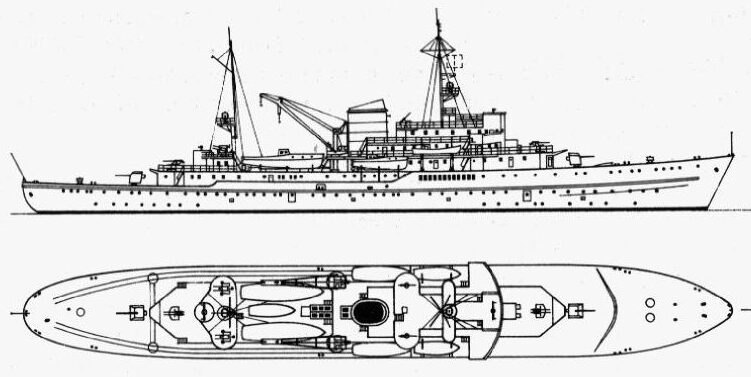
The GUSTAV NACHTIGAL class were another pair of S-boat tenders, launched from 1940 onwards. The Class comprised KMS Gustav Nachtigal (Deutsche Werke, Antwerp, comm. 13.5.44, to Great Britain 1945, Belgium 1951), and KMS Hermann von Wissmann (Cockerill, Antwerp, 16.12.43, torpedoed 15.6,44), Laid down in 1937 and 1939 as Polish cargo vessels. Both were captured after the fall of Poland.
Sge was indeed under construction as Polish M/B “Lewant II” and by May 1940, uncompleted ship, confiscated by the Wehrmacht at John Cockerill Yard in Antwerp. Decision was made to complete her to the end of April 1942 due to copper shortage, but soon after comission she was attacked by Sworfished and air-torpedoed west of Borkum on 14.6.1944 while under command of Korv.Kapt.d.Res. Bohm.
Specs
Displacement: 3100t standard; 3700t deep load
Dimensions: 374ft wl x 48ft 3in x 19ft 8in (114.00 x 14.70 x 6.00m)
Machinery: One Blohm & Voss diesel, 3,800bhp 17kts
Armament: 3x 105mm/45 C32, 3×2 37mm/83 M42, 10x 20mm C38
Complement: c250
 Auxiliary S-Boote Tenders
Auxiliary S-Boote Tenders
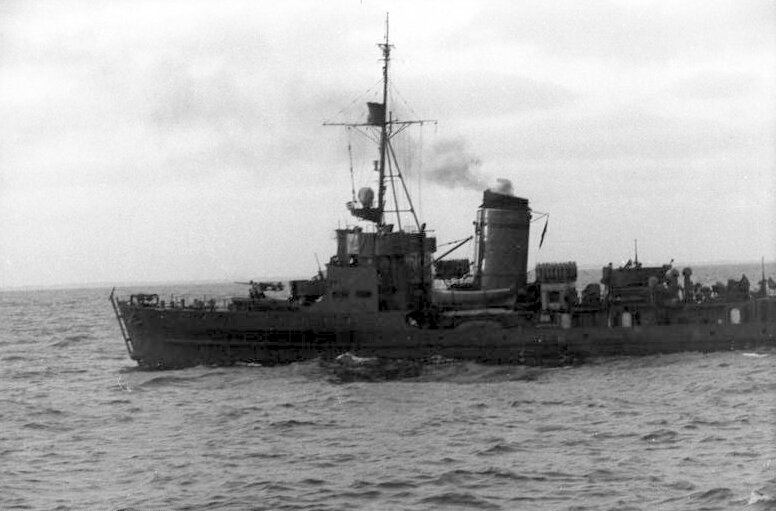
There were also the following R-boat tenders, converted former minesweepers:
Von der Groeben (M507, ex-M 107)
Alders (M526, ex-M126)
Raule (M533, ex-M133)
Jungingen (M534, ex-M 134)
Nettelbeck (M538, ex-M138)
Von der Lippe (M546, ex-M146)
Brommy (M550, ex-M50)
Hille (M560, ex-M60).
 Staatsjacht GRILLE (1934)
Staatsjacht GRILLE (1934)
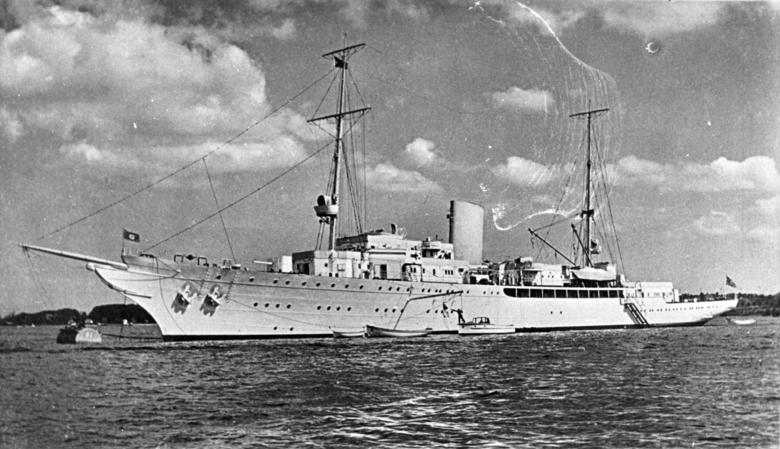
Grille was an Admiralty yacht (launched 15.12.34) and first ship in the Knegsmarine to test the high-pressure steam machinery that was scheduled for use in German destroyers. Laid down in March 1934 at the Blohm & Voss yard in Hamburg, she commissioned on 19.5.35 and served in peacetime as an Admiralty yacht during fleet reviews and visits by VIPs. During the war she was used as a minelayer up to February 1942. She was decommissioned in July 1942 and was used asa staff ship at Narvik for the C in C and ComSub Arctic. After the war Grille was transferred to Great Britain and then in 1947 to the USA, where she was sold to private owners. She was broken up in 1951.
Specs
Displacement: 2560 tons standard; 3430t deep load
Dimensions: 377ft 3in wide 442ft 1in oa (not including bowsprit) x 44ft4in x 11ft 2in, 13ft 9in max (115.00, 138.00 x 13.50 x 3.40, 4.20m)
Machinery: 2x Blohm & Voss geared turbines, 2 Benson boilers, 22,000shp, 26kts
Armament: 3x 127mm/45 C34, 2×2 37mm/83 C33, 4x 20mm C30
Complement: 248
 Hela (1929)
Hela (1929)
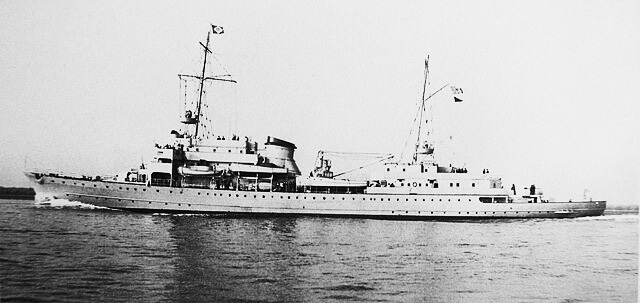
HELA was a single fleet tender launched 22.12.39, Laid down in 1937 by Stülckenwerft, Hamburg, and commissioned 16.10.40. Her machinery was originally installed in MS Athen.
After almost three years of construction, she was commissioned on 16 October 1940 under command of Captain Paul Schulze. By December 1940, she served as command ship for the office of the 2nd Admiral, RADM Leopold Siemens and 5 May 1941 she brought Hitler to Gdynia/Gotenhafen and visited KMS Bismarck in the roadstead, and sailed to the Atlantic. The office of the 2nd admiral was dissolved. October 1943, Corvette Captain Oswald Neumann took command. On 16 April 1945, she was slightly damaged in a British air raid on Swinoujscie/Swinemünde. She sailed to Eckernförde, confiscated by Great Britain but after the end of the war, the ship was awarded to the Soviet Union as spoils of war and on 5 November 1945, renamed Angara.
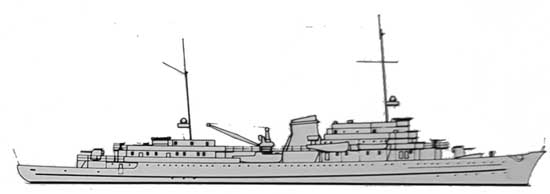
Specs
Displacement: 2113t standard; 2520t deep load
Dimensions: 303ft 6in wl, 327ft 5in oa x 41ft 8in x 11ft 6in, 13ft lin max (92.50, 99.80 x 12.70 x 3.50, 4.00m)
Machinery: 2 shafts MAN 4-stroke diesels, 4700bhp 19.3kts
Armament: 2x 105mm/45 C32, 1x 37mm/83 C30, 2x 20mm C30
Complement: 259
 Castor class (1940)
Castor class (1940)
Castor, Pollux, Eisbar, Eisvogel
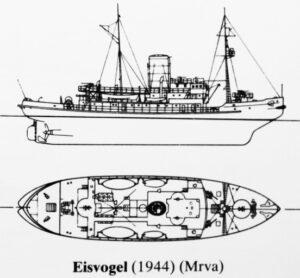 Note: No cc photos found of Castor, this is Eisvogel. CASTOR was an icebreaker in peacetime, usable as AA training ship, launched 15.10.40. at Schichau, Danzig, initially laid down in 1938 and commissioned 15.10.40. Her armament originally planned was four single 105mm/45 C32. She hit a mine in the Baltic on 15.3.45 but was raised in 1951 and was transferred to the Soviet Union under the name Peresvet. A sister-ship, Pollux, was planned but not laid down. She was not alone as the Kriegsmarine in the Baltic also operated the EISBAR, POLLUX and EISVOGEL.
Note: No cc photos found of Castor, this is Eisvogel. CASTOR was an icebreaker in peacetime, usable as AA training ship, launched 15.10.40. at Schichau, Danzig, initially laid down in 1938 and commissioned 15.10.40. Her armament originally planned was four single 105mm/45 C32. She hit a mine in the Baltic on 15.3.45 but was raised in 1951 and was transferred to the Soviet Union under the name Peresvet. A sister-ship, Pollux, was planned but not laid down. She was not alone as the Kriegsmarine in the Baltic also operated the EISBAR, POLLUX and EISVOGEL.
KMS Castor Specs
Displacement: 5150t standard; 6271t deep load
Dimensions: 272ft 4in wl, 295ft 3in oa x 68ft 1lin x 19ft 8in, 22ft 4in max (83.00, 90.00 X 21.00 x 6.00, 6.80m)
Machinery: 3-shaft VTE, 4 Wagner watertube boilers, 9600ihp = 15kts
Armament: 1-105mm/45 C32, 4-37mm/83 M42 (2X2), 16-20mm C38
Complement: 390
 Flakschiffe 1942-44
Flakschiffe 1942-44
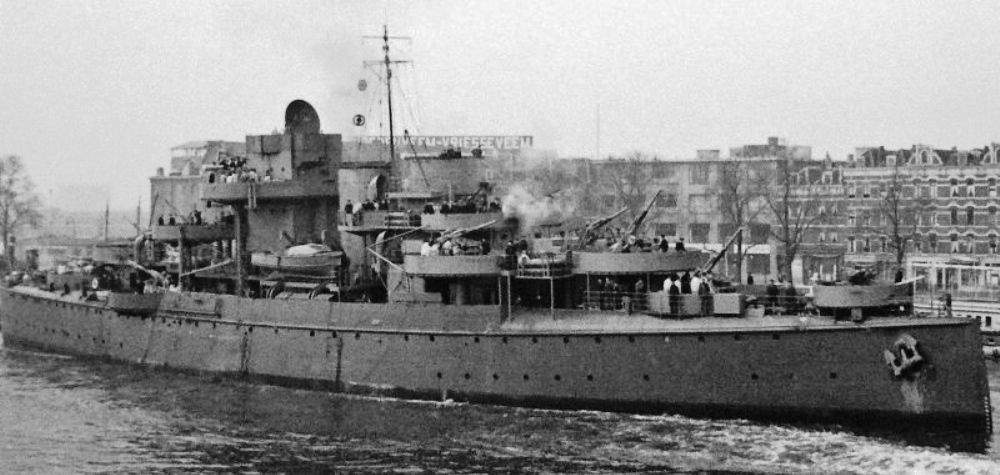
Flakschiff KMS Niobe, ex-Gelderland (captured Duth cruiser).
These were several ships used as FLAKschiffe (AA vessels).
-KMS Niobe was for example the Ex Gelderland (1899). Captured in May 1940, rebuilt and rearmed in 1943-44 in an AA floating battery, used to defend bases of S-Boote and R-Boote against allied aviation attacks. She was equipped with radars and sophisticated fire control systems, and bore an imposing Flak. She operated on the coasts of Finland, where she was sent by the bottom by a massive raid of Russian aircraft (more than 160). She was the only one of these batteries to have kept her powerplant active.
The others were towed: Arcona, Ariadne, Medusa were former German cruisers of 1900 decommissioned. Requistioned, rebuilt and recommissioned, with various fates.
The other Dutch cruisers were renamed KMS Undine, Nymph and Thetis as well as the ex-Norwegian Tordenskjöld and Harald Haarfarge, well protected as they were former coastal battleships. They were all sunk by heavy bombers, operating at an altitude putting them out of reach. However, these batteries were deadly for low altitude attackers indeed. There will be a desicated post on them.
Specs (Niobe)
Displacement: 1800t, 2200t FL
Dimensions: 100 x 15.20 x 5.30m
Propulsion: 4 Parsons turbines, 4 Yarrow boilers, 54,000 hp. and 26 knots max
Crew: 300
Armament: 14 x 105 mm (7×2), 8 x 37 mm (4×2), 16 x 20 mm FLAK (4×4)
 Nachtjagdleitschiff Togo (1943)
Nachtjagdleitschiff Togo (1943)
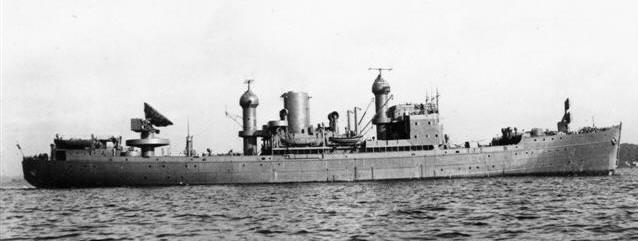
The origin of German fighter direction ships lay in the need to provide distant early warning of enemy air activity for the Luftwaffe transport aircraft supplving Rommel’s Afrika Korps — British fighters were causing such heavy losses that the ability of the ground forces to mount an efficient campaign was being seriously threatened.
The first ship designated for conversion to a fighter direction ship was the Vichy French MS St Odette (ex-Gran). Renamed Odysseus, she was, however, torpedoed on 28.12.42 by HM submarine Ursula before any work could be carried out. The next ship was the Kreta (ex-Ile de Beauté), which was captured by the Germans at Marseilles 18.1.43. By August 1943 the conversion work was finished, but as the ship was preparing for trials the capitulation of Italy brought about a fundamental change in the strategic situation.
Kreta served as troop transport for the German evacuation of Corsica. Whilst covering a minelaying operation she was torpedoed in the Strait of Bonifacio on 21.9.43 by HM submarine Unseen. Two faster ships were next converted, the Italian destroyers Premuda (ex-Dubrovnik) and Corsaro. Both got a Freya Al set in place of the mainmast. When the ships were ready in summer 1944, however, Allied air supremacy over the Mediterranean was so complete that they were rendered impotent. Both ships were reconverted into destroyers (see under destroyers).
The situation in Germany was different. The only gap in the line of coastal early warning Freya stations was in the Danish Belt. Here British night bombers penetrated the German skies undetected and mined the Belt waters too. So it was decided to put into service a night fighter direction/lead ship. The choice fell on the commerce raider Coronel. She was armed with 3—105mm/45 C32 (3×1), 2-40mm/70 Bofors 28, 4-37mm/83 M42 (4X1), 20-20mm C38 (5 x 4) and 4-73mm Fohn rocket projectors and fitted out with a Freya 1800cm radar system (tracking radius 75 miles) forward and a Wiirzburg-giant FuMG65 53.6cm/600MC system (radius 56 miles) aft. Reverting to the name Togo, the ship recommissioned 18.10.43 with a complement of 357 and operated in the Danish Sund and in the Baltic, being used towards the end of the war as a troop and refugee transport. She was ceded to the USA in 1946 and later transferred to Norway under the name Svalbard. She survives today as the freighter Lacastelle, registered in Panama.

Specs (as fighter direction ship)
Displacement: 12,700 t (12,500 long tons)[1]
Dimensions: 134 x 17.9 x 7.9m (439 ft 8 in, 58 ft 9 in, 25 ft 11 in)
Propulsion: 1 shaft, 2× 8-cyl. diesels 5,100 hp (3,800 kW) 16 kn (30 km/h; 18 mph)
Range: 36,000 nmi (67,000 km; 41,000 mi) at 10 kn
Crew: 283 crew + 74 Luftwaffe radar specialists. Could guide two night fighters simultaneously
Sensors: FuMG A1 Freya radar early warning radar, Würzburg-Riese gun-laying radar
Armament: 3x 10.5 cm AA, 4×2 3.7 cm AA, 4 flakvierling + 2x 20 mm FLAK
 KMS Hugo Zeye (1940)
KMS Hugo Zeye (1940)
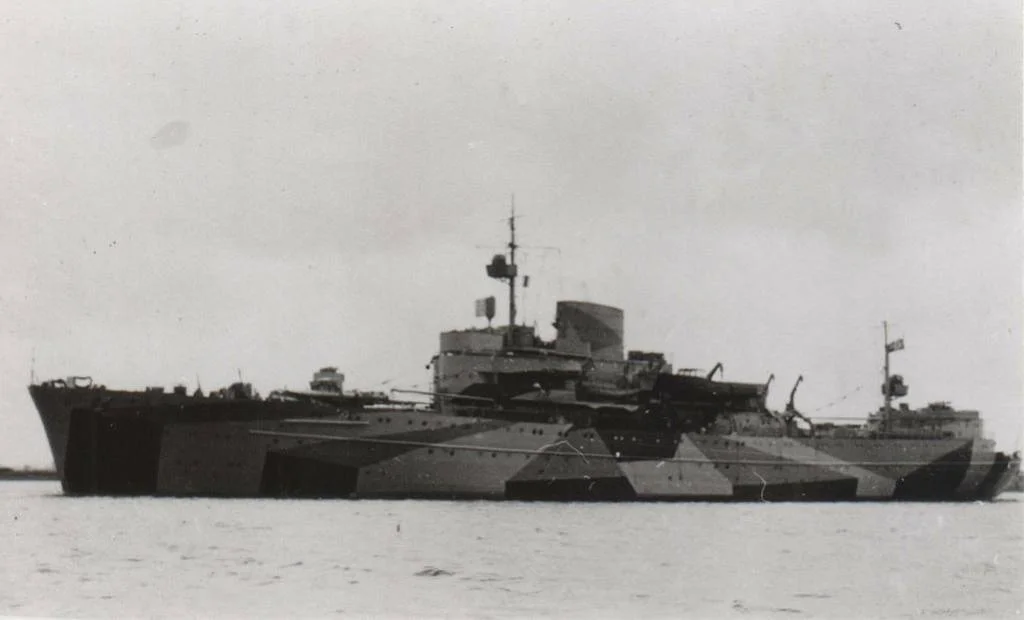
src shipnostalgia.com
Hugo Zeye was a small liners laid down at A.G. Neptun Rostock, 1939, Launched on 14.09.1940, requisitioned, armed, and commissioned on 19.07.1942 as Torpedoschulschiff (Torpedo schoolship). She was apparently armed with six Flakvierling 20 mm FLAK to double as local AA defense ship and equipped with eight torpedo tubes, under command of KK Warnholtz. She was sunk on 14.03.1945 after hitting a mine while repatriating troops from east Prussia, only 3 survived.
 Kanonenboote
Kanonenboote
Following the capitulation of Belgium and the Netherlands, a number of miscellaneous vessels were taken over, classified as Kanonenboote (gunvessels), numbered and commissioned into the Kriegsmarine in 1942-43:
–K1 (ex-Dutch) 1,200t 4-120mm, 437mm, Bombed 5.5.45 12-20mm
–K2 (ex-Dutch) 1,200 4-120mm, 4-37mm, Torpedoed 12-20mm 9.10.44, raised and BU
–K3 (ex-Dutch) 1,200t 4-120mm, 4-37mm, Van Speyk 12-20mm 1945, BU 1960
–K4 (ex-Belgian) 1,640t 3-105mm, 4-37mm, Belgian Artvelde Lorelei 10-20mm 1945, BU 1954
 Schnell Geleitboote
Schnell Geleitboote
After the fall of France and seizure of Atlantic coast ports, small fighting vessels in construction were seized (all fled either to Channel British ports or in the gulf of Gascony). They were recommissioned as Schnell Geleitboote or fast escorts for convoys transiting through the gulf of Gascony to the Mediterranean or through the Channel after completion under German specs in 1942-43.
-SG1, 2, 3 and 4 were the ex Jupiter class sub-hunter/escorts. SG3 and SG4 returned to France as Beautemps Beauprés and La Pérouse. SG2 was bombed and sunk in Jan 1944, as SG1.
Specs
Displacement: 1372t standard; 1760t deep load
Dimensions: See FR
Machinery: See FR
Armament: 2x 105mm/45 C32, 2×2 37mm/83 M42, 10-14x 20mm C38
Complement: See FR
The rest of 25 ships also seized in France, mostly after Operation Lila (invasion of Vichy France), and were less suitable as warships, being avisos, sloops or former auxiliaries such as cable layer, hydrographic vessels, tenders and minelayers, coastal steamers armed in general by two 102 mm as above, two single 37 mm FLAK, and up to six 20 mm. They were also all named under SG numbers, up to SG 29. SG14 was the former aviso Matelot Leblanc, bombed on 24.8.1943, SG15 was the ex Rageot de la Touche, torpedoed off Genoa 25.4.1944, SG 22 was the ex-Cdt Rivière, sunk in May 1945. SG23 was the ex Batailleuse (WW1 vintage escort) scuttled in Genoa on 25.4. 1945, SG16 was ex Amiral senes, and SG17 ex-Ens. Ballande survived the war and were took basck to France, but scrapped soon after.
These were also ex-Dutch vessels, ex-Danish, ex-Italian after Nov.1943, moslty minesweepers and minelayers. The Kriesgmarine also operated its own Torpedo recovery vessel KMS MZ1, a 280t corvette, and a long list of minelayers, auxiliary minesweepers, ferries, armed trawlers and misc. transports. Due to the difficulty of transporting troops in the Mediterranean due to the Gibraltar gap, the Afrika Korps and its supplies, as well as German troops movements from Tunisia to Sicily, and then from there to Italy were done by captured local ships of all sorts, not all were armed due to shortages.
German Weather ships:
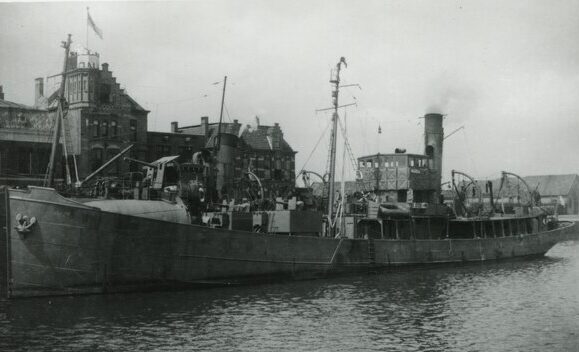
August Wriedt (WBS 8), former Norwegian trawler Hjalmar:
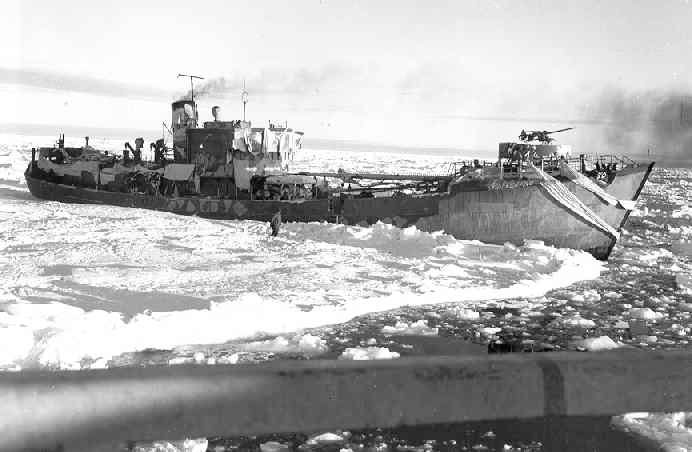
Callao, IX-205, Externsteine after being captured by USCGC Eastwind: 1,015 tons 55.78 x 9.40 x 4.24 m), 2 VTE 750 shp 10 kts, 2x 20 mm FLAK
Adolf Vinnen (WBS 5), August Wriedt (WBS 8), Berlebek (WBS 7 / WBS 14), Coburg (WBS 2 ), Externsteine (WBS 11), Hermann / Sachsen (WBS 1), Hessen (WBS 11 / WBS 8), Hinrich Freese (WBS 4), Hoheweg (WBS 5), Fritz Homann (WBS 3 / WBS 4), Kehdingen WBS 6), Carl J. Busch (WBS 3), Lauenburg (WBS 3), Leipzig, Merceditta (WBS 9), Mob. FD 34 (WBS 10), München (WBS 6), Ostmark (WBS 5), Sachsenwald (WBS 7), Skudd 1 (WBS 10), Star XV (WBS 10), Teutoberger Wald (WBS 12), Wuppertal (WBS 1)
Lazarettschiff (Hospital ships):
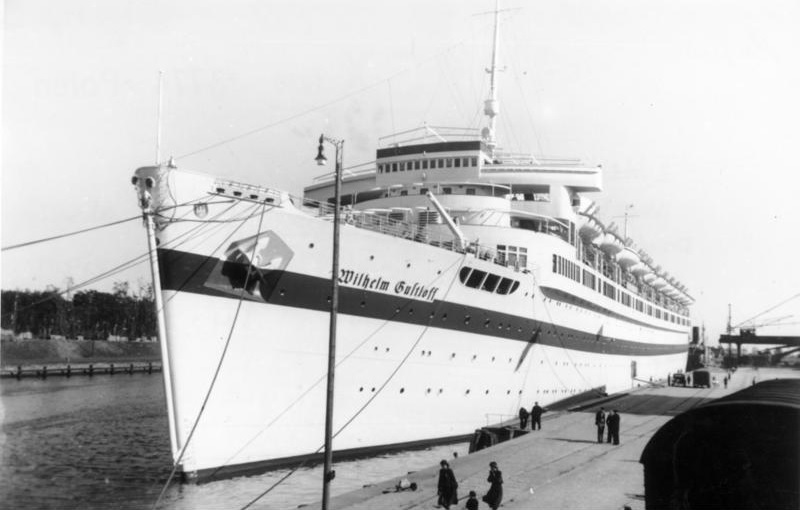
Gustloff in Dantzig, Sept.1939
Berlin, Birka, Bordeaux, Fasan, Gradisca, Huxter, Lindau, Mars, Meteor, Robert Ley, Rostock, Rügen, Strassburg, Stuttgart, Wilhelm Gustloff.
All of course unarmed and clearly marked as the allies (les the Soviet) respected the Geneva convention on these ships. Wilhelm Gustloff was famously sunk in 1945 with thousands of troops and refugee on board from East Prussia, torpedoed by a Soviet submarine. This was the greatest loss of life since Titanic and before the Dona Paz.
Truppenschiff (Troop ships):
These were Cap Arcona (1927), Deutschland (1923), Goya (1940), General von Steuben (1923), Wilhelm Gustloff (1937), Hamburg (1926), Pretoria (1936) and Albert Ballin/Hansa (1923). They were used notably during Operation Weserübung in Norway, and the invasion of Denmark.
Segelschulschiffe (Sail training ships):
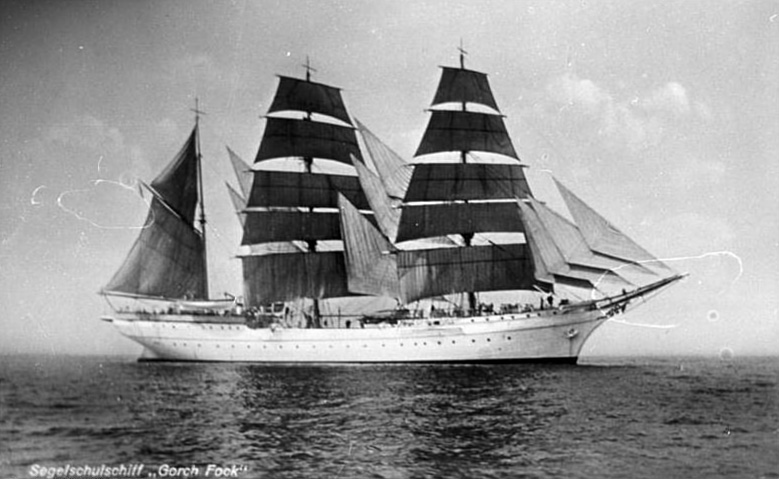
Niobe (1913), Gorch Fock (1933, later Russian training ship Tovarishch), Horst Wessel ( 1936 later US Coast Guard Ship Eagle) and Albert Leo Schlageter, 1937 (Later the Portuguese training ship Sagres).
Read More/Src
Links
worldnavalships.com/
kbismarck.com/
german-navy.de/ hugozeye
german-navy.de bremse
www.s-boot.net/ gustav nachtigal
en.wikipedia.org List_of_Kriegsmarine_ships
web.archive.org wehrmacht-history.com kriegsmarine training-ship hugo zeye
dawlishchronicles.com
s-boot.net tenders.html

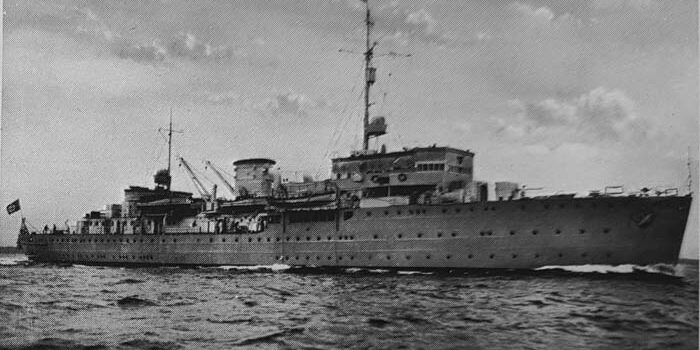

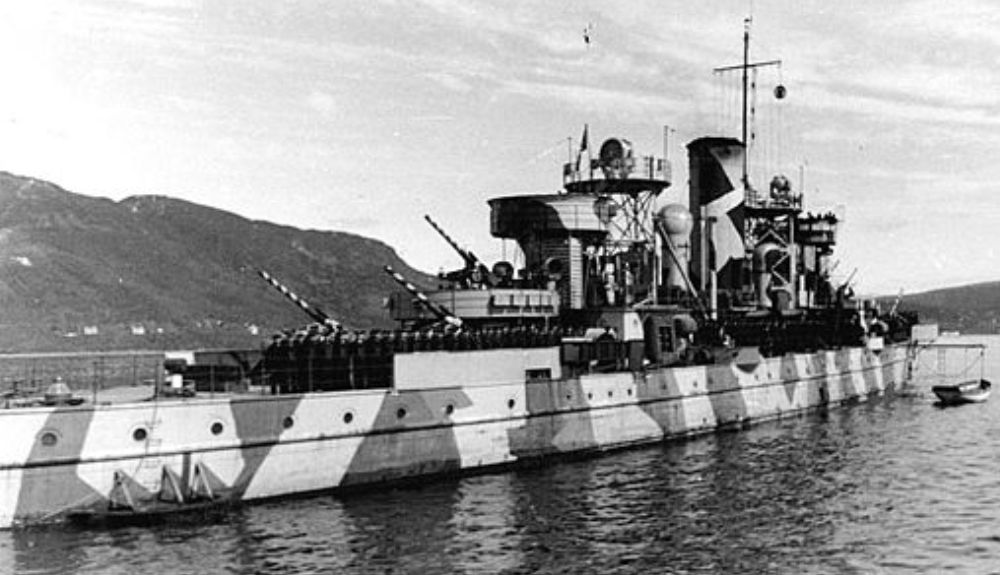
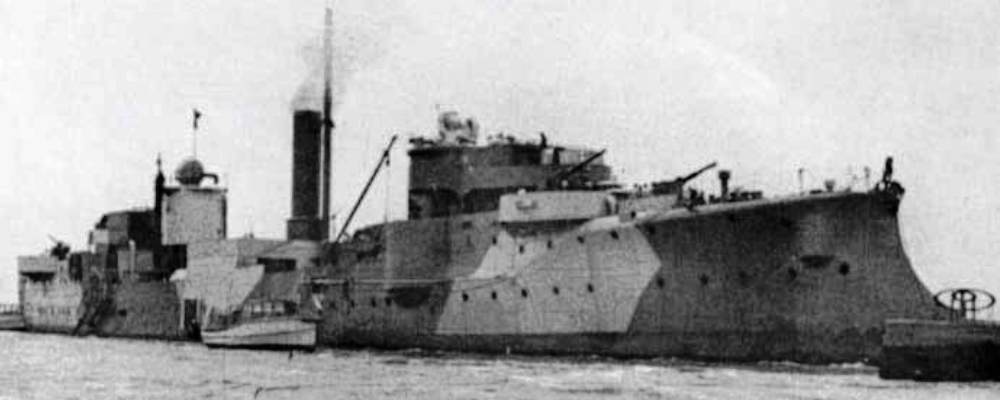
 Latest Facebook Entry -
Latest Facebook Entry -  X(Tweeter) Naval Encyclopedia's deck archive
X(Tweeter) Naval Encyclopedia's deck archive Instagram (@navalencyc)
Instagram (@navalencyc)





 Austrian Navy
Austrian Navy French Navy
French Navy Royal Navy
Royal Navy Armada Espanola
Armada Espanola K.u.K. Kriegsmarine
K.u.K. Kriegsmarine Dansk Marine
Dansk Marine Nautiko Hellenon
Nautiko Hellenon Koninklije Marine 1870
Koninklije Marine 1870 Marinha do Brasil
Marinha do Brasil Osmanlı Donanması
Osmanlı Donanması Marina Do Peru
Marina Do Peru Marinha do Portugal
Marinha do Portugal Regia Marina 1870
Regia Marina 1870 Nihhon Kaigun 1870
Nihhon Kaigun 1870 Preußische Marine 1870
Preußische Marine 1870 Russkiy Flot 1870
Russkiy Flot 1870 Svenska marinen
Svenska marinen Søværnet
Søværnet Union Navy
Union Navy Confederate Navy
Confederate Navy Armada de Argentina
Armada de Argentina Imperial Chinese Navy
Imperial Chinese Navy Marinha do Portugal
Marinha do Portugal Mexico
Mexico Kaiserliche Marine
Kaiserliche Marine 1898 US Navy
1898 US Navy Russkiy Flot
Russkiy Flot French Naval Aviation
French Naval Aviation Russian Naval Aviation
Russian Naval Aviation Sovietskiy Flot
Sovietskiy Flot Royal Canadian Navy
Royal Canadian Navy Royal Australian Navy
Royal Australian Navy RNZN Fleet
RNZN Fleet Chinese Navy 1937
Chinese Navy 1937 Kriegsmarine
Kriegsmarine Chilean Navy
Chilean Navy Danish Navy
Danish Navy Finnish Navy
Finnish Navy Hellenic Navy
Hellenic Navy Polish Navy
Polish Navy Romanian Navy
Romanian Navy Turkish Navy
Turkish Navy Royal Yugoslav Navy
Royal Yugoslav Navy Royal Thai Navy
Royal Thai Navy Minor Navies
Minor Navies Albania
Albania Austria
Austria Belgium
Belgium Columbia
Columbia Costa Rica
Costa Rica Cuba
Cuba Czechoslovakia
Czechoslovakia Dominican Republic
Dominican Republic Haiti
Haiti Hungary
Hungary Honduras
Honduras Estonia
Estonia Iceland
Iceland Eire
Eire Equador
Equador Iran
Iran Iraq
Iraq Latvia
Latvia Liberia
Liberia Lithuania
Lithuania Mandchukuo
Mandchukuo Morocco
Morocco Nicaragua
Nicaragua Persia
Persia San Salvador
San Salvador Sarawak
Sarawak Uruguay
Uruguay Venezuela
Venezuela Zanzibar
Zanzibar Warsaw Pact Navies
Warsaw Pact Navies Bulgaria
Bulgaria Hungary
Hungary

 Bundesmarine
Bundesmarine Dutch Navy
Dutch Navy Hellenic Navy
Hellenic Navy Marina Militare
Marina Militare Taiwanese Navy
Taiwanese Navy Chinese Navy
Chinese Navy Indian Navy
Indian Navy Indonesian Navy
Indonesian Navy JMSDF
JMSDF North Korean Navy
North Korean Navy Philippines Navy
Philippines Navy ROKN
ROKN IDF Navy
IDF Navy Royal New Zealand Navy
Royal New Zealand Navy Egyptian Navy
Egyptian Navy South African Navy
South African Navy

































 RN
RN
 Marine Nationale
Marine Nationale
 Soviet Navy
Soviet Navy
 dbodesign
dbodesign